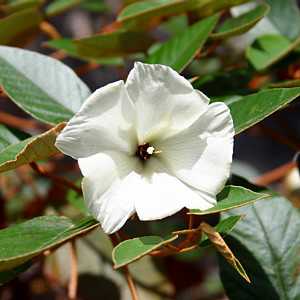⏱ QUICK READ
On this page we index the National Symbols of St Helena; official and otherwise… In most cases, the symbol is described more fully on a linked page of its own.
How does something become a National Symbol?

Naturally, some National Symbols are formally and officially declared; flags being the most obvious examples. Others get that status by popular acclaim. As can be seen from the list below, only two of our National Symbols are formally registered as such. In only one of the other cases the status was awarded after some sort of process; for the rest they ‘just are’!
To be one of our National Symbols the object in question needs to be associated with St Helena, and only with St Helena. So while tuna fish are an important part of the island’s life (comprising one our main foodstuffs), they could not be considered a National Symbol. For the same reason, neither could Donkeys.
A National Symbol must also command widespread acceptance as such. So although it has been suggested that the Spiky Yellow Woodlouse be declared our ‘National Invertebrate’, it seems highly unlikely that the majority of the population (who never have, and are never likely to see one) would agree, or even care.
One might imagine that an easy way to identify a place’s National Symbols would be to examine its coins and/or banknotes, but that doesn’t seem to work here. Our coins feature a tuna fish; a donkey; Jonathan the tortoise; dolphins; a St Helena Ebony; a turtle{1}; a Sooty Tern; and our Coat of Arms. Only two of these - the Coat of Arms and the St Helena Ebony - are actually a National Symbol, though it could be argued that Jonathan also almost qualifies.
The current set
Below: Flag Coat of Arms National Bird National Flower National Tree National Song
The following are formally declared National Symbols of St Helena.
Our Flag

Our flag was Commissioned by Governor Massingham in 1983, as one of the initiatives to mark the 150th Anniversary of St Helena becoming a Crown Colony. It was granted by Royal Warrant, published in the St Helena Government Gazette on 30th January 1984.
Learn more about our flag.
Our Coat of Arms

The Coat of Arms was designed by the Garter King of Arms in London in consultation with the Governor and the Foreign and Commonwealth Office during 1982/83. On 30th January 1984, Her Majesty The Queen commanded that the Coat of Arms be registered at the College of Arms for exclusive and sole use on St Helena. This was published in Gazette No 2 of 31st January 1984.
Learn more about our Coat of Arms.
The following are not formally declared, but would be widely considered by the population as National Symbols of St Helena.
Our National Bird

Wirebird, Melliss, 1875{b}
Nobody would dispute that our National Bird is The Wirebird. It even appears on our flag! And it is the island’s only surviving Endemic bird which should also accord it special status.
Learn more about The Wirebird.
Our National Flower

Our national flower is the St Helena Ebony trochetiopsis ebenus. It was approved as the national flower by majority vote of the people of St Helena in 2011, getting 87% of the votes. It replaced the Arum Lily zantedeschia aethiopica. The Ebony is also the icon for Saint Helena Island Info: ![]() .
.
Learn more about The St Helena Ebony.
Our National Tree

Our national tree is the St Helena Gumwood commidendrum robustum. The Millennium Forest has the island’s largest plantation of Gumwoods, but there are many others. An area of St Pauls is known as ‘The Gumwoods’.
Our National Song

Although our official Anthem is God Save the King, nobody (not even The Wikipedia) would dispute that our National Song is ‘My St Helena Island’ - even though the song was actually recorded by an American who’d never even been to St Helena!
Learn more about ‘My St Helena Island’.
We also have a National Hymn…
The official crest
You will see the St Helena Shield (which forms part of our flag and Coat of Arms) represented in many different ways. The one we use on Saint Helena Island Info is the official one, provided by the Government of St Helena in May 2019 (First image, below). Also shown (below) are other variants we have seen used, of which the ‘Cartoon Wirebird’ version seems to be the most popular:
Read More
Article: National Flower, National Bird, National…
By Vince Thompson, published in The Independent 21st February 2014
Last time I mentioned this subject the verdict was that a decision on whether or not to change the national flower from the Arum Lily to the Ebony would be made at Legislative Council after the Wirebird census had been completed and the DAPM team from DFID had been and gone. Well, the census is finished and the result has been published. The DAPM team has gone and their verdict on progress or otherwise as we continue the onward march to a bright new airport-based future has been fully discussed.
We have also had a Legislative Council meeting; a particularly boring one I thought and still no mention of the outcome of the Arum versus Ebony debate.
I managed to get into a discussion with Eddie Duff this week and asked him what the hold-up was. My question gave Eddie the opportunity to tell me, at length, all about the hours of talking that goes on in council meetings but that decisions are very rare events. When we finally got around to what the national flower may or may not be he said there was some argument about this. It seems that if there are some people who still raise objections even after the majority have stated their opinion one way or another, it is taken as an excuse to delay things. This may be one of the main reasons why Eddie grumbles about all the talk and no action. Sorry, but if the majority are in favour of a particular course of action then that is a good basis, but not the only basis, for coming to a decision. There will always be some who do not like a decision but that is not a reason for not making a decision.
After talking about all of that Eddie stated with enthusiasm that he also wanted to see adopted a national tree, [the gumwood], a national fish [deep water jack] a national invertebrate [spiky yellow woodlouse] and, for good measure a national sea slug [don’t know its name but its endemic] and a national crab [again, don’t know its name but it’s named after Basil George and it’s endemic].
On the basis of current progress I think Eddie will need to be a councillor for twenty more years after this current term finishes. I don’t think there is much chance of getting more than one national emblem adopted during the course of a single four year term.
Eddie was confident we do have a national bird, the Wirebird. I’m not sure it’s officially adopted, maybe it is. It does appear on official badges and things like that. If it’s not officially adopted it should be. After all, there really is no choice; it’s the only endemic bird that survived the ravages of human habitation. It would be a nonsense, wouldn’t it, to adopt the Java Sparrow or the Madagascar Fody [Cardinal].
Credits:
{a} William Blum{b} From ‘St Helena: A Physical, Historical and Topographical Description of the Island{2}’
Footnotes:
{1} PLEASE NOTE: This actually is a turtle, not a tortoise.{2} …including the Geology, Fauna, Flora and Meteorology, by John Melliss, published in 1875.


